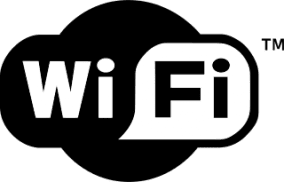![]() In many of our homes and offices, the connection between our devices — Mac or iOS — and the Internet is all dependent on the strength and speed of our WiFi setup. When things aren’t working quite the way you want them to, it may be time to troubleshoot that setup. Perhaps the router isn’t in a good location, or you’re on a crowded WiFi channel. Whatever the situation, WiFi Explorer (US$14.99) may be just the tool to get your WiFi network running at its fastest.
In many of our homes and offices, the connection between our devices — Mac or iOS — and the Internet is all dependent on the strength and speed of our WiFi setup. When things aren’t working quite the way you want them to, it may be time to troubleshoot that setup. Perhaps the router isn’t in a good location, or you’re on a crowded WiFi channel. Whatever the situation, WiFi Explorer (US$14.99) may be just the tool to get your WiFi network running at its fastest.
The OS X app, which is compatible with any version of the Mac OS from 10.7 (Lion) to 10.11 (El Capitan), uses a large and constantly updated database of vendor information about individual WiFi routers to identify all of the routers in your near vicinity. In its default mode, WiFi Explorer displays a list of all network names, BSSIDs (basic service set identification — the MAC address of the router), the vendor that built the device, the signal strength, the channel or channels being used, the width of that channel, the band that the router is on (usually 2.4 or 5 GHz), and the modes in which it operates (802.11 a/b/g/n/ac).
In the preferences for WiFi Explorer, a huge number of other network attributes can be added to the columns already displayed.
Clicking on any of the device listings allows the user to view the signal strength over time and at the current time. There’s also an indication of which devices are on the same WiFi channel, which can be a hint to select a different channel.
Frankly, I am impressed with the sheer power of WiFi Explorer. When I worked as an IT project manager in the previous decade, my networking experts often used dedicated equipment costing thousands of dollars that didn’t provide as much information in such an easy-to-understand format. And later, when I was a Mac consultant, I could have used WiFi Explorer during the many times I had to instead had to use trial-and-error methods to troubleshoot network problems.
In my testing, I was able to see that by just physically moving my rather dated Apple AirPort Extreme less than a foot, my average signal strength over time jumped about 3 percent. That’s not a huge amount, but it demonstrated to me just how important placement of a router can be.
If I have any complaint about WiFi Explorer, it’s that I’d like to see the developer — Adrian Granados — create a how-to guide detailing use of WiFi Explorer in day-to-day troubleshooting. For novice users, the concepts of WiFi channel conflicts, signal strength and overlapping, and how to determine what changes to make to your router setup to improve WiFi performance are totally lacking and could make the app even more useful.
For Mac professionals who need to perform WiFi troubleshooting on a regular basis, WiFi Explorer is a must-have tool for your kit of apps. Even if you’re not a consultant or network engineer, WiFi Explorer can be just the app to use to fine-tune your own home or office network or even justify upgrading your router.









Actually, it is known to all that Wifi Explorer is a powerful Network Troubleshooter for MAC. In fact, the speed of the Wifi is mainly responsible for the connection between the devices and MAC with the internet as well.
I had purchased your 2 X 16GB upgrade for my iMac 21.5 late 2013 computer (Yosemite) with the understanding that I could install this. I also bought your installation package. I just noticed that Apple is now saying that the upgrade of this iMac must be done at an Apple Store or Authorized Service company. I knew I would have difficulty in doing this as I have Essential Tremor and this level of hand dexterity may well be beyond my capabilities. Do you think the local BestBuy (I bought my iMac from them) would be up to doing a good job of this? Do you have other suggestions for me?
Thanks for your help and advice.
PS: I am no where near maxed out on memory on this computer but it is inherently slow and I hope that maxing out the memory will help speed it up. Am I dreaming here? Could I benefit from the Explorer WiFi App to help me determine deficiencies in my network?
Charles, please check your email for a note from me. Thanks!
Adrian is a most responsive software developer and WiFi Explorer is exactly as your review states. It is easy to use and very useful in the common sense approach to the design and implementation.
Using WiFi Explorer actually teaches and simply paying close attention to what is provided as information will enrich knowledge of the use of WiFi in general.
Tying up this developer to provide a tutorial is asking a bit much. There are far too many variables to provide such a work. Perhaps a writer and IT professional such as yourself would be better suited for the suggested and a more general in scope “how-to” guide?
Cover router placement, router channel selection vs. auto select, sources of interference other than channel loading, locating the computer to better receive the WiFi signal, setting up the computer preferences to avoid issues, to name but a few of a myriad of potential sub-topics?
Using WiFi Explorer as a impromptu beta-tester during early development facilitated locating and correcting an array of building grounding issues which WiFi Explorer first detected as a variation in signal strength and random noise level injection. Further investigation brought to light a problem with shoddy contractor workmanship and incorrect electrical grounding by the power provider, both safety and potential fire issues. Something which would be difficult to include in a “how-to.”